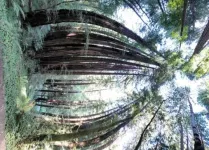(Press-News.org) Malaria is caused by a eukaryotic microbe of the Plasmodium genus, and is responsible for more deaths than all other parasitic diseases combined. In order to transmit from the human host to the mosquito vector, the parasite has to differentiate to its sexual stage, referred to as the gametocyte stage. Unlike primary sex determination in mammals, which occurs at the chromosome level, it is not known what causes this unicellular parasite to form males and females. New research at Stockholm University has implemented high-resolution genomic tools to map the global repertoire of genes of gametocyte development towards the male or the female sexual fates.
The study, published in Nature Communications, uncovers the genes that are expressed in Plasmodium falciparum, the deadliest among the malaria parasites, from the very onset of sexual stage development until they reach maturity. At this point, the male and female gametocytes are ready to be taken up by the female Anopheles mosquito in order to initiate the unrelenting transmission cycle.
“We have combined state-of-the-art single-cell genomics with a novel computational approach to define the expression of several important genetic regulators along the developmental trajectory of male and female gametocytes“, says Johan Ankarklev, Associate Professor at the department of Molecular Biosciences, the Wenner Gren Institute, and senior author of the study.
The research from Stockholm University, performed in collaboration with Dr. Johan Henriksson at MIMS - Umeå University and the Microbial Single Cell Genomics facility at SciLifeLab, is important for improving our understanding of the genetics underlying malaria transmission.
A widely conserved family of transcription factors called the ApiAP2, has emerged as key regulators of gene expression during Plasmodium lifecycle-stage differentiation and development.
“Our high-resolution data enabled us to computationally link the expression of several of these ApiAP2 genes with either the male or the female lineage, implicating their involvement in sexual cell fate determination. Importantly, we also established a large set of novel candidate “driver” genes of the male and the female cell fates, which we are currently further exploring in the lab using CRISPR technology”, Johan Ankarklev continues.
The study contributes important findings to the malaria community but also to the greater scientific community:
From a clinical perspective, treatment strategies have historically targeted the highly symptomatic, asexual blood stage of infection, with variable degrees of success. Importantly, current treatment strategies do not inhibit malaria transmission. This study provides new and important genetic markers for the future development of transmission blocking therapies, which is the only way to inhibit the spread of malaria.
From an evolutionary perspective, considering that Plasmodium is an ancient microbial eukaryote that produces males and females, the new data and analyses contribute novel information and clues regarding the evolution of sex in eukaryotes.
There is currently little knowledge about malaria’s sexual reproduction
Most eukaryotes undergo sexual reproduction to ensure diversity and fitness selection. In animals, sex determination most commonly involves males and females. However, among the vast diversity of organisms that make up the eukaryotic microbes, the systems by which sex is defined are highly diverse and often cryptic. The malaria parasite, Plasmodium spp., belongs to the Apicomplexan phylum, a group of obligate invasive, unicellular parasites, which form male and female gametes. The French scientist, Alphonse Laveran, first described the crescent-shaped malaria gametocyte in 1880, two decades later the British physician, Robert Ross, made the discovery that malaria was transmitted by mosquitoes. Despite these important discoveries, it is only in recent years that significant progress has been made in improving our understanding of the biology of the malaria transmission stages, thanks to new and groundbreaking biotechnology.
How new genomic tools enable progress in malaria research
Single-cell transcriptome profiling allows a snap-shot of a large array of genes expressed in one cell, in this case one malaria parasite, at a given point of development. When adding thousands of single cell transcriptomes to the analysis it becomes a powerful tool for determining genetic pathways and developmental bifurcations, which is essential for lineage tracing.
“By combining Pseudotime and RNA Velocity, two recently developed computational tools, we aligned the several thousands of cells along a branched pseudo-time axis, second, we used RNA velocity estimates to define the splicing kinetics among transcripts across the developmental axes. This then allowed us to predict a large panel of putative “driver genes” for the male and the female sexual fates, and interestingly, a large number of these genes have previously not been annotated, says Mubasher Mohammed, a former PhD student at the Ankarklev Lab and lead author of the study.
Researcher with first-hand experience
Mubasher grew up in Sudan where he experienced the devastating effects of malaria first hand.
“It is a fun time to be a scientist, where new technologies enable us to make giant leaps in our understanding of different types of diseases that plague human kind”, says Mubasher Mohammed.
Transmission a vulnerable stage
The malaria transmission stage marks a dramatic decrease in the parasite population numbers making it an attractive target for antimalarial control efforts.
“When such a bottleneck occurs in the population, it becomes more vulnerable to drugs and environmental factors. By delineating the molecular mechanisms of gametocyte development, we can target these pathways to develop effective transmission-blocking strategies, vital for malaria eradication efforts”, says Alexis Dziedziech, a previous postdoc at the AnkarklevLab and co-author on the study.
Find the study “Single-cell transcriptomics reveal transcriptional programs underlying male and female cell fate during Plasmodium falciparum gametocytogenesis” published in Nature Communications: https://www.nature.com/articles/s41467-024-51201-3
DOI: 10.1038/s41467-024-51201-3
Facts about malaria
Malaria remains a large global health burden as it is estimated to infect 230 million people and cause more than 600,000 deaths per year, mainly children in Sub-Saharan Africa. Over a hundred species of Plasmodium exist, where five are known to infect humans. Plasmodium falciparum is responsible for the vast majority of severe cases and deaths.
Malaria is a vector-borne disease, meaning that transmission from person-to-person occurs via an arthropod vector, namely the Anopheles mosquito. Symptoms usually appear 10-15 days after the mosquito bite and start with fever, headache and chills. If left untreated it will commonly lead to serious illness, including cerebral malaria, severe anemia and/or respiratory distress.
Treatments are available, where artemisinin-based combination therapy is currently the best alternative for P. falciparum. However, the malaria parasite is known for its ability to develop resistance to all commercially available drugs.
Facts about the Apicomplexa
The Apicomplexan phylum contains a diverse group of eukaryotic microbes, which all share a group of structures and organelles termed the apical complex. The apical complex contains components required for host cell invasion.
The Apicomplexa have highly complex lifecycles including multiple different developmental stages, where all are obligate parasites at some part of the lifecycle and some even infect two separate hosts for their asexual and sexual stages, which is the case for the malaria parasite.
Diseases caused by Apicomplexan organisms include: Malaria, Toxoplasmosis, Cryptosporidiosis, Babesiosis and Cyclosporiasis. END
Mapping the sex life of Malaria parasites at single cell resolution, reveals the genetics underlying Malaria transmission
2024-08-26
ELSE PRESS RELEASES FROM THIS DATE:
Communicating consensus strengthens beliefs about climate change
2024-08-26
Climate scientists have long agreed that humans are largely responsible for climate change. However, people often do not realize how many scientists share this view. A new 27-country study published in the journal Nature Human Behaviour finds that communicating the consensus among scientists can clear up misperceptions and strengthen beliefs about climate change.
The study is co-led by Bojana Većkalov at the University of Amsterdam and Sandra Geiger of the University of Vienna. Kai Ruggeri, professor of health policy and management at Columbia University Mailman School of Public Health, is the corresponding author.
Scientific consensus identifying humans as primarily ...
Almost half of FDA-approved AI medical devices are not trained on real patient data
2024-08-26
Artificial intelligence (AI) has practically limitless applications in healthcare, ranging from auto-drafting patient messages in MyChart to optimizing organ transplantation and improving tumor removal accuracy. Despite their potential benefit to doctors and patients alike, these tools have been met with skepticism because of patient privacy concerns, the possibility of bias, and device accuracy.
In response to the rapidly evolving use and approval of AI medical devices in healthcare, a multi-institutional team of researchers at the UNC School of Medicine, Duke University, Ally Bank, Oxford University, Colombia University, and University of Miami have been on a mission to build ...
Does the extent of structural racism in a neighborhood affect residents’ risk of cancer from traffic-related air pollution?
2024-08-26
High levels of traffic-related air pollutants have been linked with elevated risks of developing cancer and other diseases. New research indicates that multiple aspects of structural racism—the ways in which societal laws, policies, and practices systematically disadvantage certain racial or ethnic groups—may contribute to increased exposure to carcinogenic traffic-related air pollution. The findings are published by Wiley online in CANCER, a peer-reviewed journal of the American Cancer Society.
Most studies suggesting that structural racism, which encompasses factors such as residential segregation and differences in economic status and homeownership, may influence ...
2 in 3 parents want help preventing their child from developing hereditary health conditions
2024-08-26
ANN ARBOR, Mich. – Among things many families don’t wish to pass down to their children and grandchildren: medical issues.
One in five parents say their child has been diagnosed with a hereditary condition, while nearly half expressed concerns about their child potentially developing such a condition, a new national poll suggests.
And two thirds of parents want their healthcare provider to suggest ways to prevent their child from developing a health problem that runs in the family, according to the University of Michigan Health C.S. Mott Children’s Hospital National ...
Could psychedelic-assisted therapy change addiction treatment?
2024-08-26
by Amy Norton
PISCATAWAY, NJ – After years of being seen as dangerous “party drugs,” psychedelic substances are receiving renewed attention as therapies for addiction -- but far more research is needed, according to a new special series of articles in the Journal of Studies on Alcohol and Drugs, published at Rutgers University.
Psychedelics are substances that essentially alter users’ perceptions and thoughts about their surroundings and themselves. For millennia, indigenous cultures have used plants with psychedelic properties in traditional medicine and spiritual rituals. And for a time in the mid-20th ...
Sustaining oyster farming with sturdier rafts
2024-08-26
Amid the rising human population and pressure on food supplies, the world can’t be everyone’s oyster. But perhaps there might be more oysters to eat if an Osaka Metropolitan University-led research team’s findings mean sturdy plastic rafts will be used in their farming.
Conventional oyster farming uses bamboo rafts with additional flotation devices such as Styrofoam. Though relatively affordable, these rafts can be damaged in typhoons. The OMU-led researchers propose a polyethylene raft that keeps costs manageable but is about five times more durable than a bamboo raft.
OMU Graduate School of Engineering Associate ...
People of lower socioeconomic status less likely to receive cataract surgery in private clinics
2024-08-26
Despite increased funding for cataract surgeries to private, for-profit clinics, access to surgery fell 9% for lower-income people, according to new research published in CMAJ (Canadian Medical Association Journal) https://www.cmaj.ca/lookup/doi/10.1503/cmaj.240414.
“Unexpectedly, despite new public funding for operations provided in private for-profit surgical centres, which was intended to fully cover all overhead costs and remove the need to charge patients, this disparity did not decrease, but instead grew ...
Tick-borne Powassan virus in a child
2024-08-26
With tick-borne viruses such as Powassan virus increasing in Canada, clinicians should consider these infections in patients with encephalitis, as a case study shows in CMAJ (Canadian Medical Association Journal) https://www.cmaj.ca/lookup/doi/10.1503/cmaj.240227.
Although rare, Powassan virus is serious, with a death rate of 10%–15% in people with encephalitis, and it can cause lingering health effects after infection. The virus can transmit within 15 minutes of tick attachment, and symptoms can develop 1–5 weeks later.
In this case study, a 9-year-old child with up-to-date vaccinations ...
Survey finds more than 3 in 4 Americans don’t feel they could help someone suffering an opioid overdose
2024-08-26
EMBARGOED UNTIL 12:01 A.M. AUGUST 26, 2024
NOTE TO EDITOR: (To download broadcast-quality video and other multimedia elements: https://bit.ly/3M2ljhX (password: naloxone)
COLUMBUS, Ohio – International Overdose Awareness Day is a worldwide campaign held each Aug. 31 that acknowledges the grief of family and friends left behind from those who have died from a drug overdose. This year’s campaign theme “Together we can” highlights the power of the community standing together to help end overdose.
However, a new survey of 1,000 Americans from The Ohio State University Wexner Medical ...
How to control your screentime use and make technology work for you
2024-08-26
Many of us feel that we, or our children, spend too much time staring at a screen. From gaming to social media use or ‘doomscrolling,’ it can sometimes feel that we are mindlessly spending hours going down a rabbit hole of technology.
However, according to Catherine Knibbs, a psychotherapist who specializes in cybertrauma and online harms, there are tangible steps we can all take to wrestle back control from the hands of the technology corporations.
In her new book, Managing Your Gaming and Social ...







